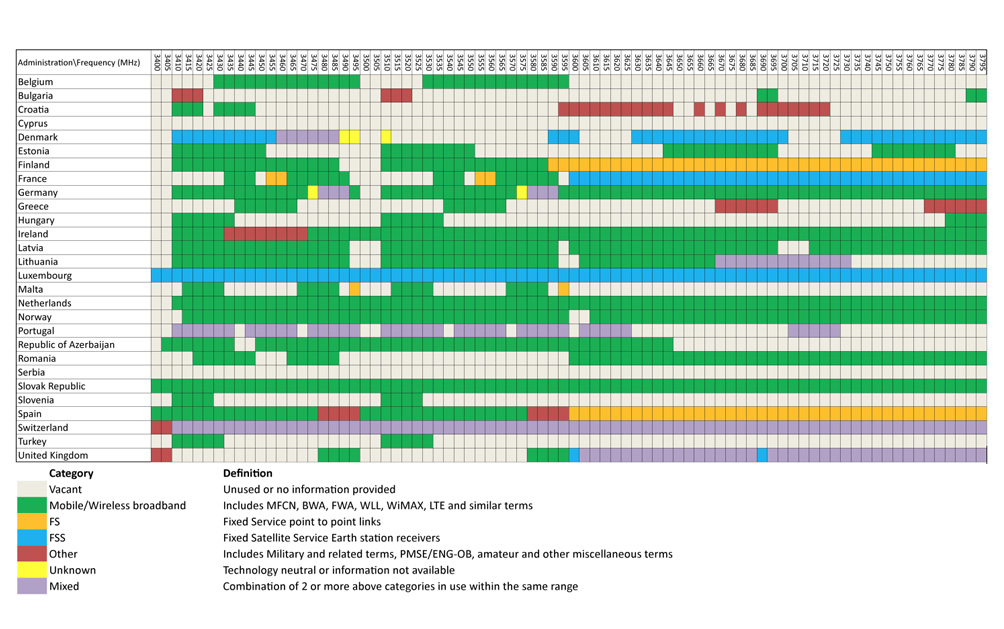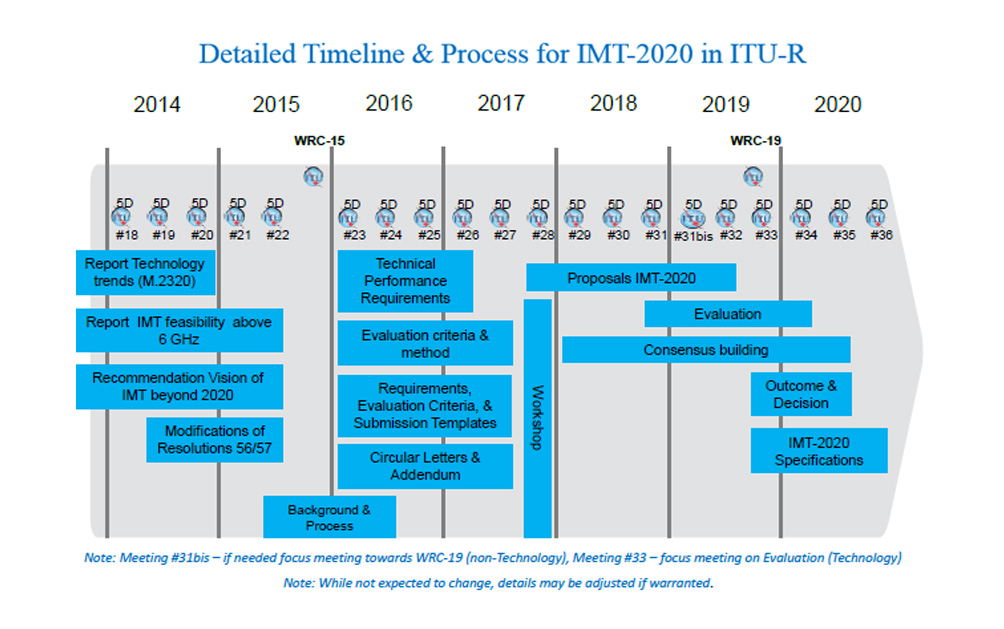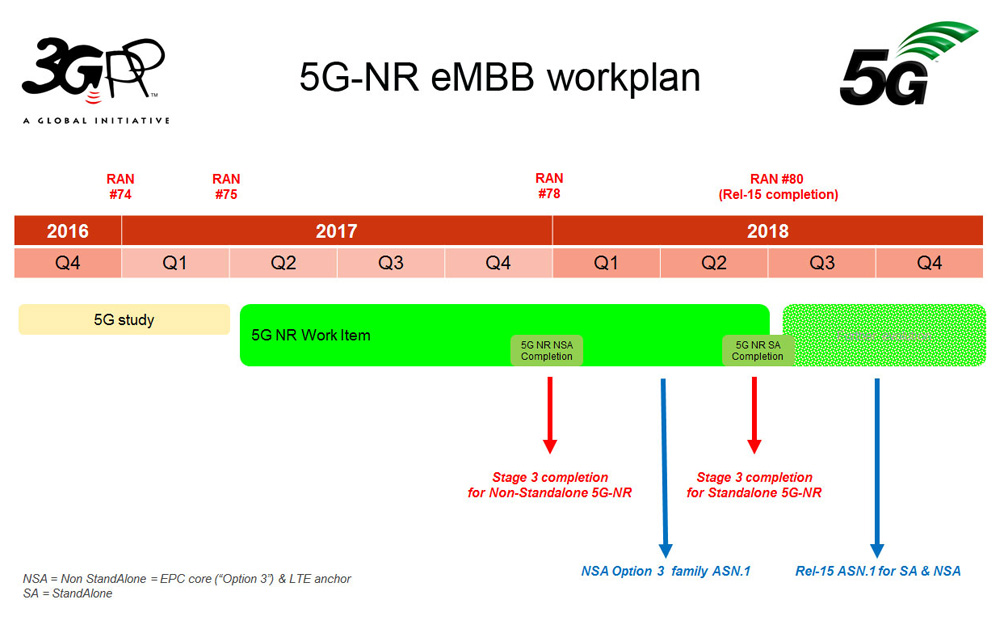ECC Newsletter September 2017
The road to 5G deployment
5G is the next generation of broadband mobile communication technologies, and is planned to be deployed around the world by 2020. It will provide increased mobile data speeds for users and new opportunities for vertical industries. Examples of 5G usage scenarios are shown in the following figure.
 Figure 1: 5G Usage Scenarios (Source: ITU-R Recommendation M.2083)
Figure 1: 5G Usage Scenarios (Source: ITU-R Recommendation M.2083)
In a special 5G edition of the ECC newsletter in December 2016, we reported on the recent CEPT 5G workshop, and introduced the CEPT 5G roadmap. Since then, ECC and in particular its Project Team PT1 have been working to achieve the aims of the roadmap, focussing mainly on the 3.4-3.8 GHz band (referred to as 3.6 GHz or “C Band”) and 24.25-27.5 GHz (referred to as 26 GHz).
In November 2016, ECC tasked ECC PT1 to develop a 5G harmonisation Decision for 26 GHz. Then, in December, the European Commission issued a Mandate to CEPT to develop harmonised technical conditions for the use of these two bands for 5G, with a deadline of June 2018 in order to allow for deployment of services by 2020.
In this article we present an update of the ongoing activities on these bands within ECC PT1, as well as ongoing developments in standardisation.
3.4-3.8 GHz: Review of existing framework and usage
The 3.4-3.8 GHz has been identified in Europe as a priority frequency band for 5G as it offers potential for wide channel bandwidths (e.g. 100 MHz), is already harmonised for mobile broadband and has relatively low existing usage in most European countries.
ECC is undertaking a review of the existing regulatory framework in this band to determine if the technical conditions (frequency arrangements and block edge mask requirements), as defined in ECC Decision (11)06 for mobile/fixed communication networks (MFCN) and Commission Decision 2014/276/EU, are suitable for 5G technology. The main challenges in this review are to facilitate usage by wider bandwidths and to determine if the block edge mask requirements can be met by 5G systems. Specifically, there is a possible need to reconsider how unwanted emissions are defined for advanced antenna systems as expected to be implemented in 5G. These issues are currently under discussion in ECC PT1, taking into account the relevant standardisation activities, and may ultimately result in a revision of ECC Decision (11)06, or a possible new ECC Decision, and potential amendment of Commission Decision 2014/276/EU.
In late 2016, PT1 carried out a questionnaire to CEPT administrations to determine the level of existing usage of the band. The results of this questionnaire identified a need to “de-fragment” existing authorisations for wireless communication networks (i.e. to re-arrange the frequencies of existing users) in order to facilitate wide bandwidth 5G assignments, and in some cases to change from a paired band plan to an unpaired band plan. The need to continue to provide protection for other incumbent users such as satellite and military at a local level was also noted.
 Figure 2: Overview of existing authorisations in 3.4-3.8 GHz reported by CEPT administrations
Figure 2: Overview of existing authorisations in 3.4-3.8 GHz reported by CEPT administrations
In this context, ECC agreed to task PT1 to develop guidelines to help administrations on de-fragmentation of the 3.4-3.8 GHz band. This activity also includes a continuous monitoring of the situation within the band with respect to national developments within administrations.
24.25-27.5 GHz: Global and European harmonisation
The 26 GHz band is one of the bands being considered for global 5G deployments under Agenda Item 1.13 of the upcoming 2019 World Radiocommunication Conference (WRC-19). This agenda item considers a range of bands above 24 GHz for possible allocation to the mobile service and/or identification for IMT (International Mobile Telecommunications).
CEPT identified 26 GHz as a pioneer band for early European harmonisation, as it provides over 3 GHz of contiguous spectrum and has the greatest potential to be a globally harmonised band.
Coexistence with various existing services in the same and adjacent frequency bands is under study in PT1 as part of the preparation for the WRC-19. Coexistence with existing and future Earth exploration-satellite service (EESS) and space research service (SRS) earth stations in 25.5-27 GHz is a current area of focus. This comes after the CEPT 5G roadmap highlighted the need for protection of these stations. Studies with Inter-Satellite Service in 25.25-27.5 GHz and with adjacent bands passive usage of radio astronomy and EESS in 23.6-24 GHz are also ongoing. Further studies will be needed to address in-band usage of Fixed Satellite Service (Earth to space) and Fixed Service, and adjacent band usage of amateur, including amateur satellites.
The results of these studies will inform the CEPT position for WRC-19 to support this band for global harmonisation.
In parallel, as the CEPT intends to harmonise the 26 GHz band in Europe for 5G before WRC-19, work has been initiated on the development of an ECC decision to develop harmonised technical conditions for the use of 5G in this band in Europe.
5G characteristics and standardisation
An important element of the studies performed within ECC is to clarify 5G parameters and deployment assumptions. ECC PT1 is therefore working closely with 3GPP and ITU-R to ensure accurate and consistent studies for the various bands under consideration.
In addition to the parameters for use in studies, ITU-R has recently finalised work on technical performance requirements and criteria for evaluation of candidate technologies for 5G (referred to as “IMT-2020” in ITU-R). The evaluation process will start in October 2017 at a workshop where industry will be invited to present proposed radio interface technologies. The final specifications are planned to be completed in 2020.
 Figure 3: ITU-R timeline for IMT-2020 (5G) specifications (source ITU-R)
Figure 3: ITU-R timeline for IMT-2020 (5G) specifications (source ITU-R)
3GPP has been working to standardise the 5G-NR (New Radio) specification. In March 2017, 3GPP decided to accelerate the timescale in order to finalise the “non-standalone” mode by March 2018. This mode will operate in parallel with 4G LTE (referred to as an “LTE anchor”) to provide boosted data-rates. The “standalone” 5G mode is planned for completion in September 2018.
 Figure 4: 3GPP 5G New Radio workplan (source 3GPP)
Figure 4: 3GPP 5G New Radio workplan (source 3GPP)
This accelerated timescale will facilitate 5G network trials in early 2018, which will in turn allow rapid commercialisation of 5G devices in 2019.
Next steps
The studies mentioned above on the 3.6 GHz and 26 GHz bands are planned to be completed by ECC PT1 in April 2018 in order to meet the deadlines set by the EC Mandate. In the case of the 26 GHz band, this will also provide a common European framework to feed into discussions to support global harmonisation at the WRC in 2019. Ultimately this will facilitate deployment of 5G networks within CEPT by 2020.
In addition, ECC PT1 will carry on its activities to study and develop positions on the other frequency bands under WRC-19 Agenda item 1.13.
The 31.8-33.4 GHz (referred to as 32 GHz) and 40.5-43.5 GHz (referred to as 40 GHz) bands were also identified as priority bands for study in the CEPT 5G roadmap. Initial studies on sharing with radar are ongoing for the 32 GHz band, and PT1 has recently started its activities for the 40 GHz band. There has also been recent interest expressed in the 66-71 GHz band within CEPT. Relevant studies are expected to start soon.
The CEPT 5G roadmap additionally identified the possibility for satellite to play a role in providing 5G connectivity, in particular to provide wide area coverage in rural areas. Within ECC, Project Team FM44 is currently developing an ECC Report to identify satellite 5G use cases and solutions, aimed to be published in May 2018.
Additional information
ECC Newsletter December 2016 - special 5G edition
CEPT 5G roadmap (reviewed at each ECC meeting)
Spectrum for wireless broadband – 5G
ECC PT1
Peter Faris, Spectrum Expert, European Communications Office



